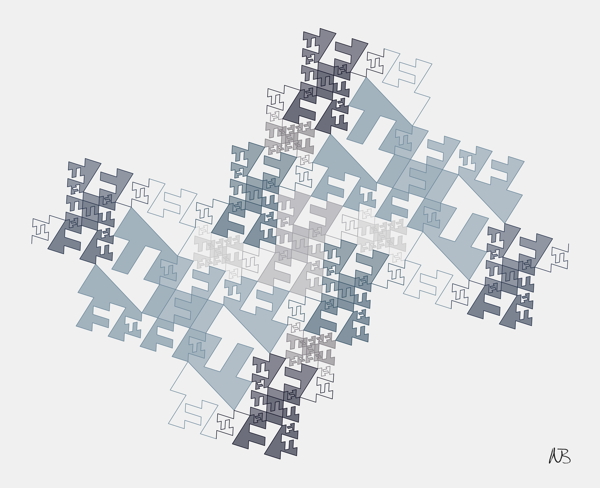Titanic fractals
Titanic2 fractal
Here you see step 1 and step 2 of the Titanic2 fractal:
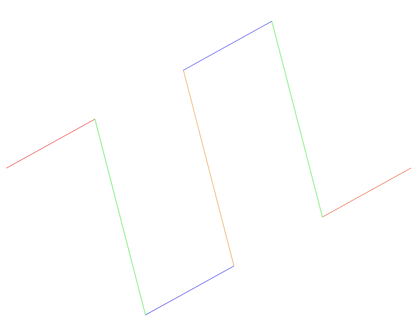
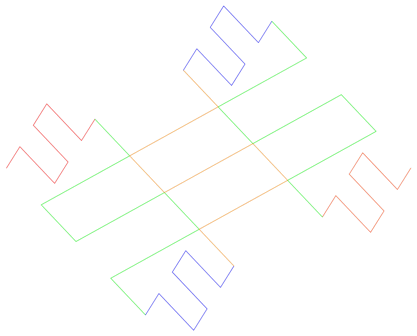
At the top of step 2, a closed figure is created, which reminds me of a sinking ship with two funnels; hence the name Titanic2.
The next three steps look like this:

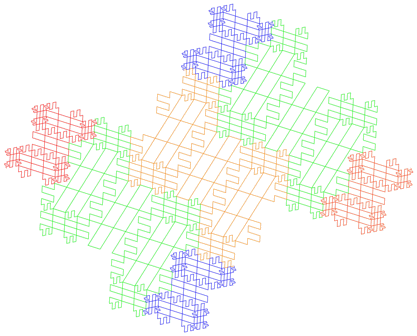
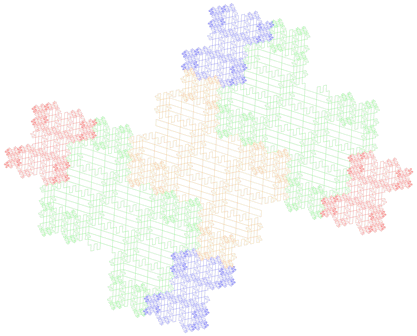
This is a fundamentally different fractal than the Duck-curve. The ratio of the lengths of the long and short line segments here is 2. And the contours become very different than in the Duck-curve.
Titanic3 fractal
Here you see step 1 and step 2 of the Titanic3 fractal:
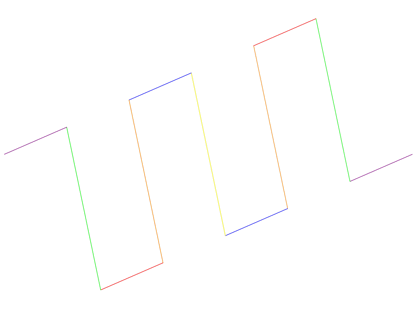
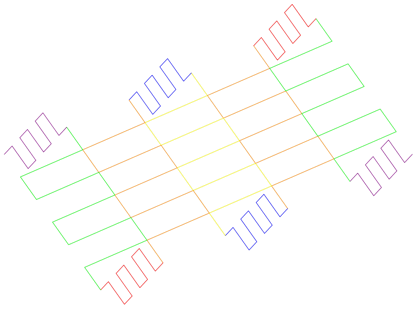
At the top of step 2, a closed figure is created, which reminds me of a sinking ship with three funnels; hence the name Titanic3.
The next three steps look like this:
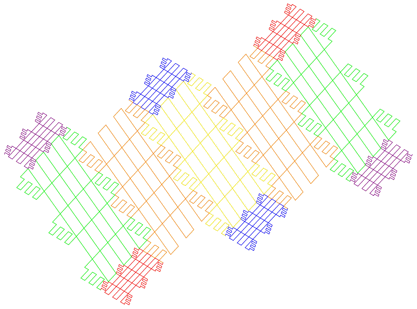
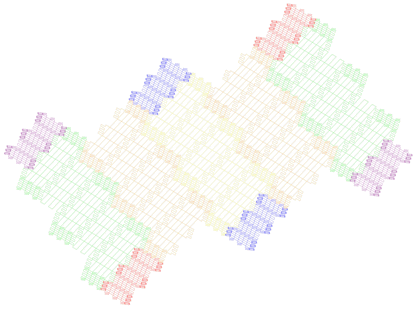
This is a fundamentally different fractal than the Duck-curve and the Titanic2 fractal. The ratio of the lengths of the long and short line segments here is √6.
In principle you can continue to make more Titanic fractals. However, they start to look more and more like a brick wall and are therefore less and less interesting.
Variant of Titanic2 fractal
A variant of the Titanic2 fractal can be made (see the first two pictures on this page) by replacing the middle orange line segment in step 1 with the orange portion in step 2.
Here are step 1 and step 2:
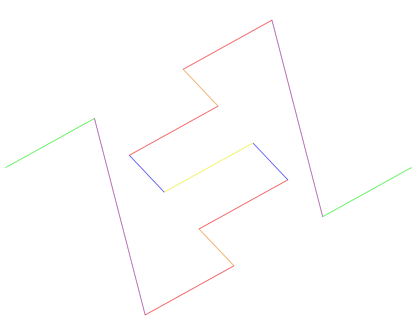

Step 3 and step 4:


Now look at step 2 again. On the left, without colouring the enclosed figures; on the right, the enclosed figures are coloured darker and lighter.
Because a fractal is a continuous line, each enclosed figure lies above or below this line. The dark coloured figures lie above the line and the light coloured figures lie below the line.
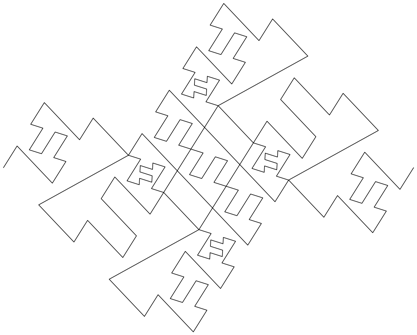

In the work submitted for Bridges 2025, you see a step 3 of this variant of Titanic2 fractal, with thirteen step 2's, coloured like the one above.
